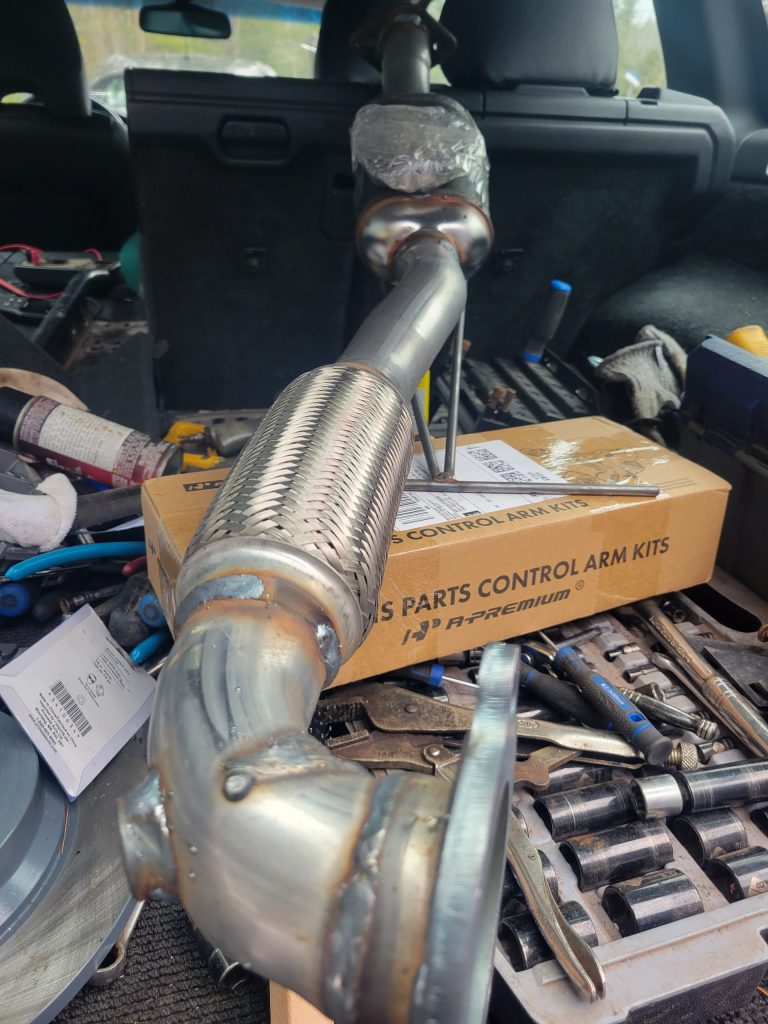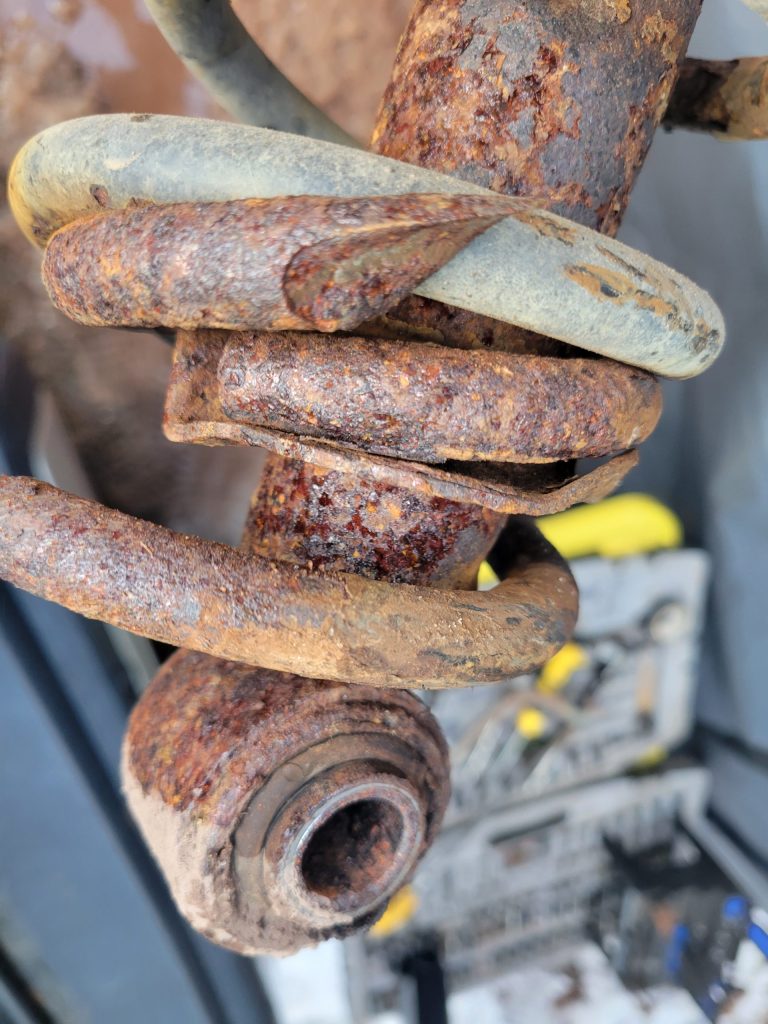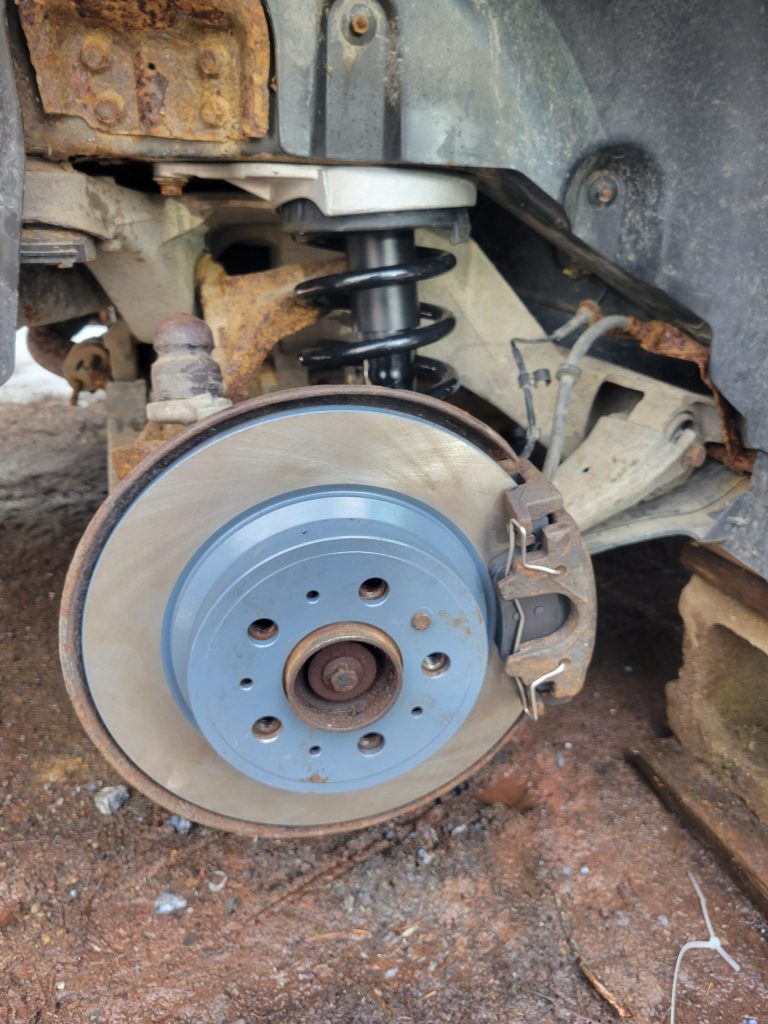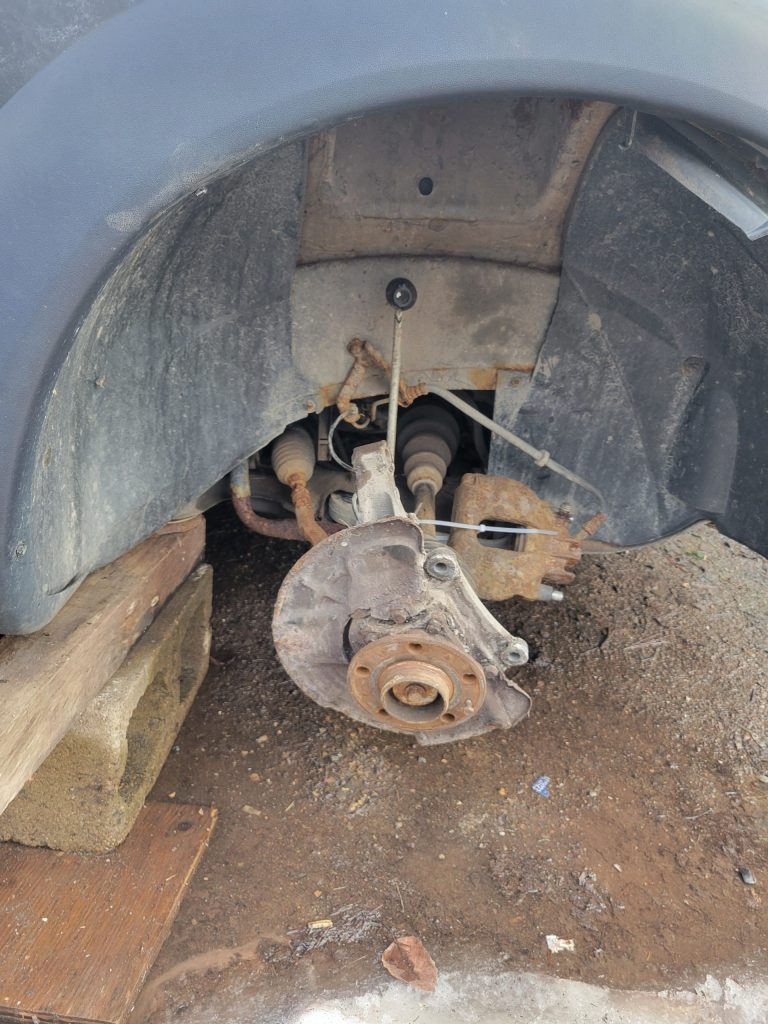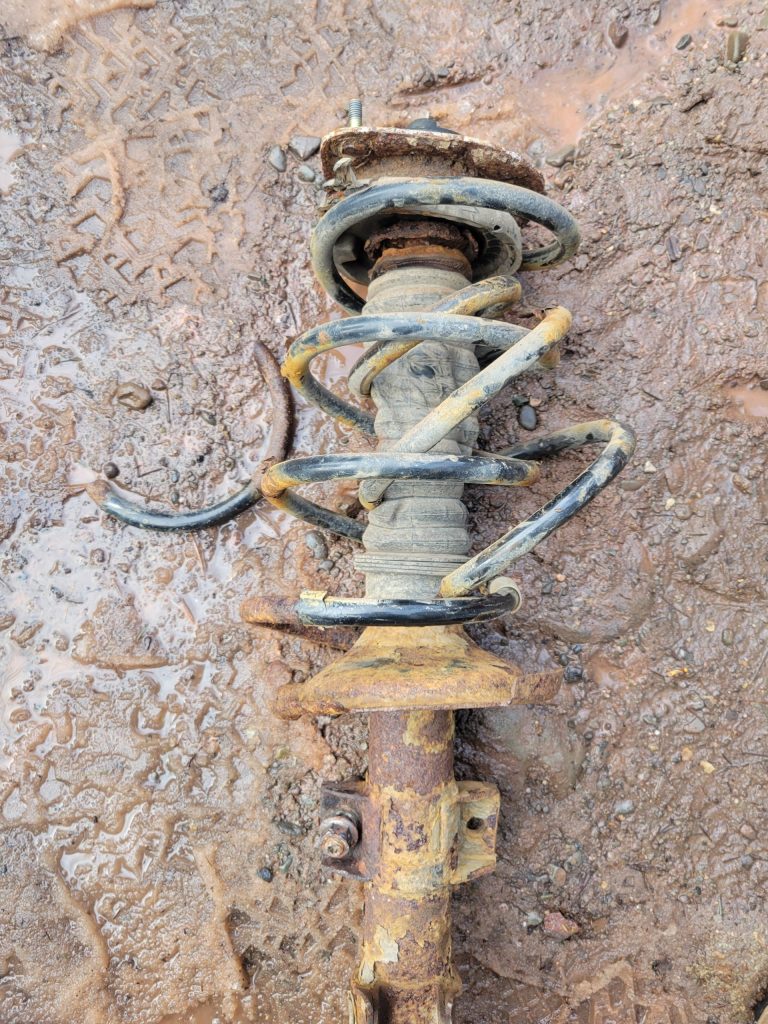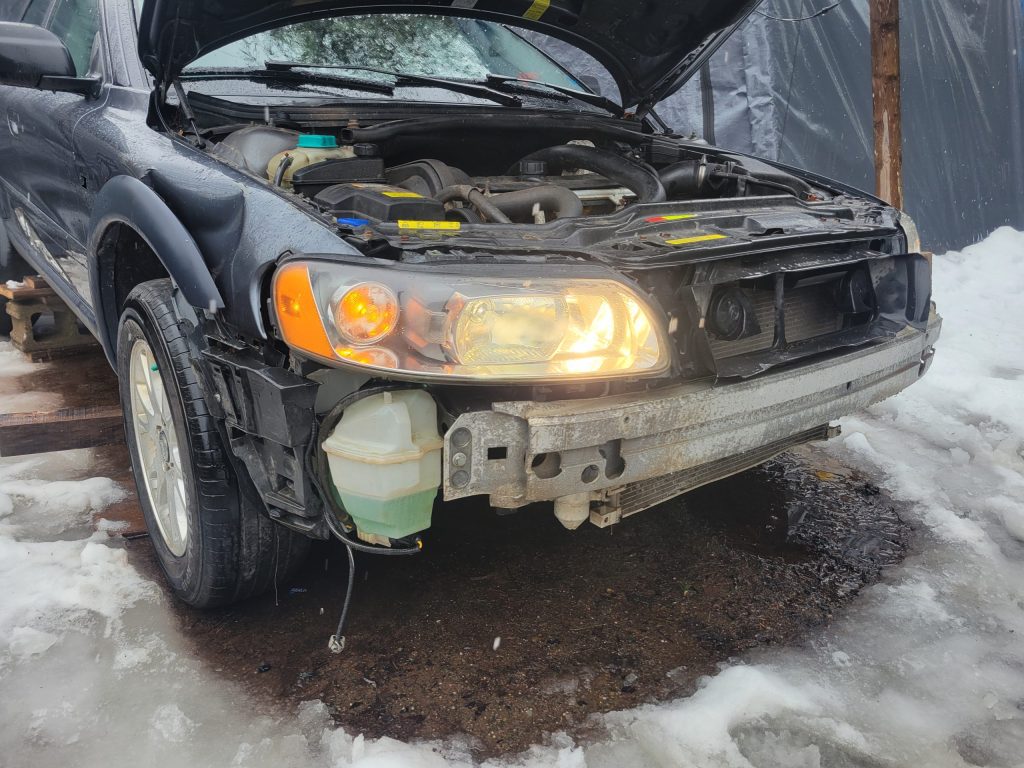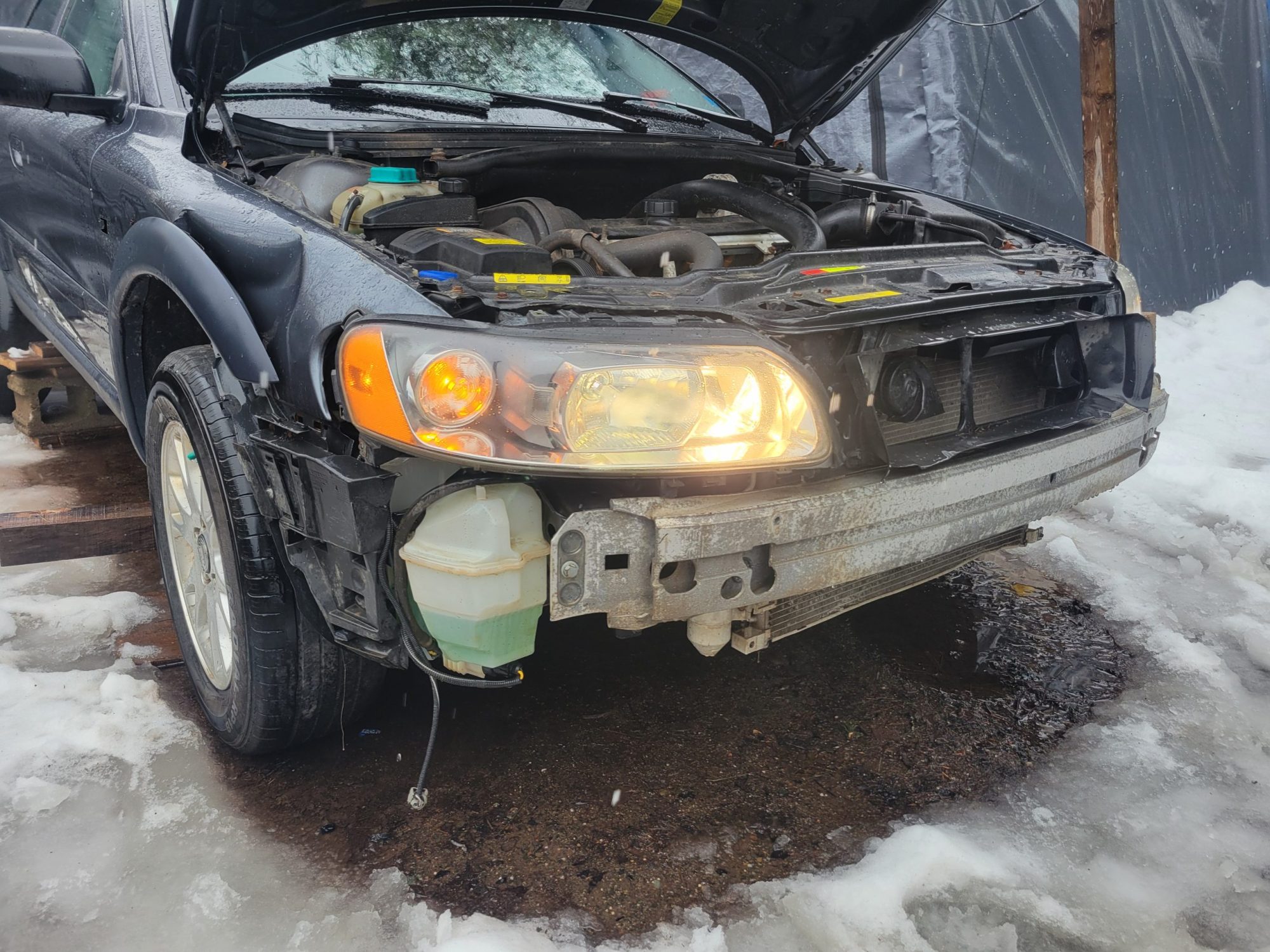In late February 2024, I bought the 2005 Volvo XC70 that would become the MooseWagen. The price tag was $1,500, and it was half-buried in a snowbank when I went to look at it. I was finally getting one of the cars Ive been after for some time now. Truth be told, I couldn’t really see what I was getting until it was being winched up onto the tow truck. Still, I figured—nothing that time and money can’t fix.
The odometer read 300,050 km. The visible damage included the passenger-side fender, hood, and headlight. Once I got it home and started pulling it apart, the hidden costs began to surface. Most of it was standard old-Volvo maintenance, but the list added up quickly:
Three of the four struts had broken springs.
All the brakes were worn, grooved, and ready for the scrap pile.
The parking brake was completely seized.
The windshield was cracked—conveniently hidden by 20 cm of snow.
The battery was toast.
And then there were the tires: four of them, mismatched in both size and brand, and all desperately in need of replacement. No wonder the car ended up in a crash.
The seller’s story was that it had hit a deer, but once I started stripping it down, the evidence suggested otherwise. Yellow paint streaks lined the damaged fender, and there was no sign of blood or hair. A barrier seemed the more likely culprit than wildlife.
After weeks of wrenching, replacing, and fixing what felt like everything, the Volvo was ready for inspection. On the Friday before the May long weekend of 2024, it passed. From salvage to roadworthy.
And it didn’t just pass—it thrived. Fast forward to July, and the car had over 10,000 trouble-free kilometers under its belt, a fresh oil change, and a parcel arriving from Europe: a 30 mm lift kit.
But that’s a story for the next stage.
Project: Moosewagen Gallery
